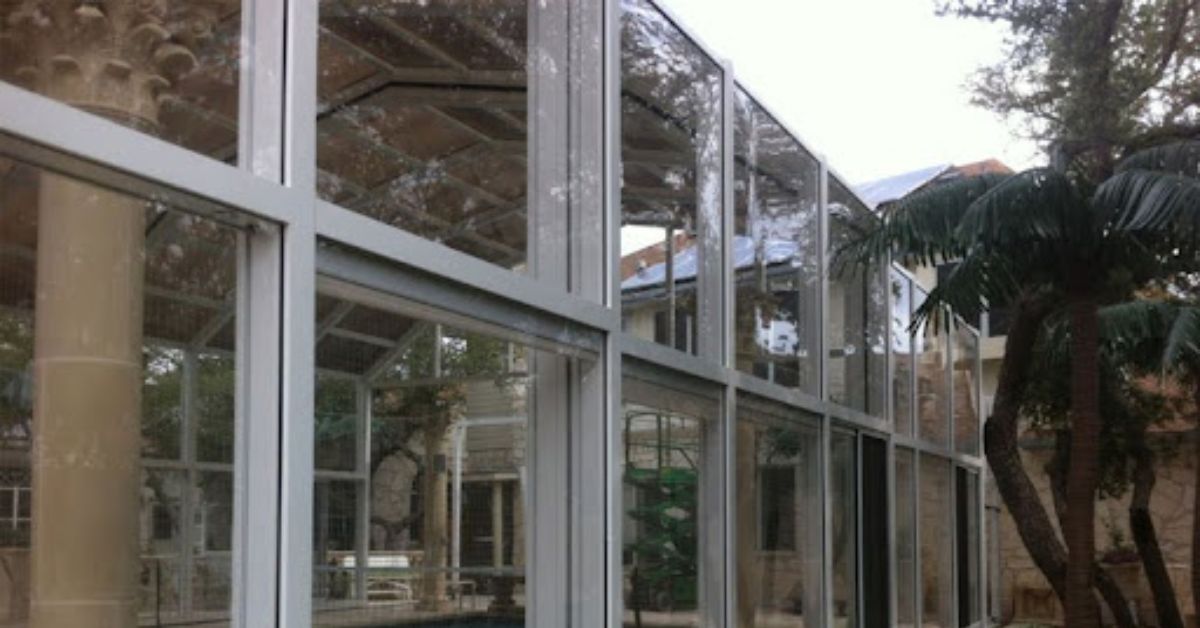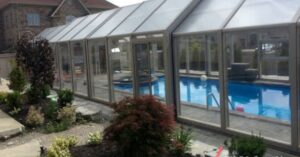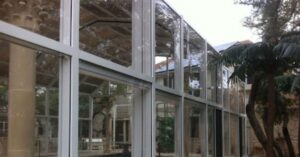HOME IMPROVEMENT
A Day in the Life of a Mobile Espresso Bar at an Event

It’s a crisp Saturday morning, and the team at Goodhart Coffee Catering of Denver is already on the move. Today, they’re headed to a wedding at an elegant outdoor venue, where their mobile espresso bar will be serving freshly brewed coffee to guests. As the sun rises, casting a soft glow over the mountains in the distance, the baristas prepare for what will be a day filled with coffee, conversation, and memorable moments.
The Arrival: Setting the Stage
By 7:30 AM, the coffee cart has arrived at the venue. The event planner has chosen a charming garden setting for the ceremony, and the mobile espresso bar is set to be a centerpiece at the reception. It’s placed under a gazebo, surrounded by lush greenery, with its modern, sleek design contrasting beautifully with the natural backdrop.
As the baristas begin to unload their equipment, everything falls into place with the precision of a well-rehearsed routine. The espresso machine is polished and gleaming, the grinder carefully calibrated to ensure each shot of espresso will be perfect, and an array of flavored syrups, milk alternatives, and coffee beans from around the world are arranged neatly on the cart.
The setup is more than just functional—it’s designed to invite guests in. The aroma of freshly ground coffee starts to fill the air, and even before the first cup is served, the coffee experience has already begun.
The Calm Before the Storm: Prepping for Perfection
With the espresso machine humming quietly, the team runs a final check on their supplies: premium espresso beans, oat milk for dairy-free guests, and even house-made syrups like vanilla and caramel. Today, they’ll be offering a special menu tailored to the couple’s preferences, including iced lattes for the warm afternoon and spiced chai for guests who prefer tea over coffee.
The baristas review the day’s schedule with the event planner. The mobile espresso bar will be serving drinks as soon as guests arrive after the ceremony. It’s the perfect time for a coffee break, giving people a chance to chat and relax before dinner begins. This planning ensures the coffee cart will be a focal point of the reception, drawing people together for conversation over a custom-crafted drink.
Showtime: Coffee as a Conversation Starter
At 2:00 PM, the ceremony ends, and guests begin to make their way to the reception area. The sun is high, and the heat has people looking for something cool and refreshing. The baristas know it’s time to shine.
As the first few guests approach the mobile espresso bar, they’re greeted by the welcoming smiles of the baristas. One by one, orders are taken and drinks are crafted with care. From iced vanilla lattes to frothy cappuccinos, each drink is made to perfection. Guests are delighted to watch as the baristas work their magic—espresso shots pulled with precision, milk steamed to a silky smooth texture, and, of course, the finishing touch of intricate latte art.
For many guests, this is more than just coffee—it’s a social experience. While waiting for their drinks, they chat with the baristas about the origin of the beans and the different brewing techniques being used. Coffee becomes a conversation starter, with guests comparing their favorite drinks and swapping recommendations. The coffee cart catering service has quickly become the heart of the reception, bringing people together in an unexpected way.
The Midday Rush: Crafting with Care Under Pressure
As more guests make their way to the cart, the rush is on. The baristas work swiftly, but with a calm professionalism that shows their years of experience. The pressure is on to keep up with the demand, but they don’t miss a beat. Each drink is carefully crafted—whether it’s an espresso shot for a coffee enthusiast or a cold brew for someone looking to cool off.
Guests appreciate the attention to detail. The baristas take time to ask about preferences, suggesting flavor combinations or offering tips on the best drink to match their mood. This level of customization is what sets Goodhart Coffee Catering of Denver apart. It’s not just about serving coffee—it’s about creating a personalized experience for each guest.
The Magic of Professional Baristas
One of the highlights of the event is watching the professional baristas in action. Guests gather around the coffee cart, mesmerized by the precision with which the baristas prepare each drink. The sound of milk being steamed, the hiss of the espresso machine, and the sight of latte art coming to life in the foam—all of it creates a sensory experience that captivates everyone.
For many guests, this is their first time seeing latte art in person, and they’re fascinated by the creativity and skill involved. Hearts, leaves, and even intricate designs are poured with care into each cup, transforming a simple coffee into a work of art. Guests often ask the baristas for tips on how to recreate these designs at home, and the friendly, approachable team is more than happy to share their knowledge.
The Evening Slowdown: A Shift in Mood
As the evening approaches and the sun begins to set, the pace at the mobile espresso bar slows down. Guests, now full from dinner, return to the cart for a post-meal coffee. The mood shifts from the lively energy of the afternoon to a more relaxed, intimate vibe.
The baristas switch gears, offering warm drinks like mochas and chai lattes to complement the cooler evening air. Guests sit around the garden with their coffees in hand, enjoying the quiet moments before the dancing begins. For some, this is the perfect time to savor a rich espresso, while others indulge in a sweet treat like a caramel latte.
Even as the pace slows, the baristas continue to deliver the same level of care and precision, ensuring that each guest’s coffee is made exactly to their liking.
The Close: Wrapping Up a Successful Day
By 9:00 PM, the wedding reception is winding down. The last few guests make their way to the cart for a final drink before heading home. The baristas are tired but satisfied, knowing they’ve contributed to the day’s success.
As they pack up the mobile espresso bar, they reflect on the interactions they’ve had with guests throughout the day. It wasn’t just about serving coffee—it was about creating connections, sparking conversations, and adding something special to the event. The coffee experience provided by Goodhart Coffee Catering of Denver has left a lasting impression on every guest, ensuring that this wedding will be remembered not just for the vows and the dancing, but also for the exceptional coffee.
Conclusion: More Than Just Coffee
A mobile espresso bar at an event is more than just a convenient way to serve drinks. It’s an experience—one that brings people together, creates memorable moments, and adds a touch of artistry to any occasion. From the meticulous setup in the morning to the final espresso of the night, coffee catering plays a pivotal role in shaping the atmosphere and enhancing guest satisfaction.
With Goodhart Coffee Catering of Denver, every event becomes a celebration of craftsmanship, connection, and, of course, great coffee. Whether it’s a wedding, corporate event, or private party, the presence of a professional barista and a beautifully designed coffee cart ensures that the coffee is not just an afterthought—it’s a highlight.
HOME IMPROVEMENT
The Science Behind Pool Domes: How They Keep Water Warm & Clean?

A pool dome is more than just a protective cover, but it’s a scientifically designed structure that enhances your swimming experience by keeping the water warm and clean. Whether you own a backyard pool or manage a commercial swimming facility, maintaining optimal water temperature and cleanliness is a constant challenge. Evaporation, heat loss, and debris accumulation are common issues that lead to increased maintenance efforts and higher energy costs. Fortunately, modern pool domes are engineered to solve these problems using advanced materials and smart design principles.
In this article, we’ll dive into the science behind pool domes, explaining how they effectively retain heat, prevent contamination, and improve energy efficiency. Ultimately making them a must-have addition for pool owners.

How Pool Domes Trap Heat?
Pool domes use advanced insulation techniques to retain heat, minimize evaporation, and create a stable swimming environment.
1. The Greenhouse Effect
Pool dome functions similarly to a greenhouse. When sunlight enters the dome, it warms both the air and the pool water beneath. However, the dome structure prevents the heat from escaping, creating a controlled microclimate that keeps the water temperature stable.
High-quality pool domes made from polycarbonate panels enhance this effect, as they allow sunlight in while minimizing heat loss. The result? A naturally warmer pool without excessive heating costs.
2. Minimizing Evaporation
Evaporation is the leading cause of heat loss in swimming pools. Without a dome, water constantly evaporates, carrying heat away with it. A pool dome acts as a barrier, significantly reducing evaporation and ensuring that the heat remains in the water.
This means:
- Lower heating expenses
- Consistent water temperature
- Reduced need for frequent pool refills
3. Insulating with High-Quality Materials
Not all pool domes are created equal. Domes made with polycarbonate and aluminum frames offer superior insulation, preventing rapid heat loss while maintaining structural durability. Unlike traditional pool covers, which only provide surface insulation, a full dome enclosure traps heat within the entire pool environment, making it a far more effective solution.
How Pool Domes Prevent Water Contamination?
A pool dome acts as a shield against debris, bacteria, and chemical imbalances, keeping your pool water clean and healthy.
1. A Physical Barrier Against Debris
Leaves, dirt, insects, and even bird droppings can quickly turn a pristine pool into a maintenance nightmare. A pool dome acts as a shield, keeping unwanted debris out. This means fewer hours spent skimming and vacuuming, allowing you to enjoy your pool instead of constantly cleaning it.
2. Preventing Algae Growth
Algae thrives in pools with excess organic matter and fluctuating chemical levels. Because pool dome reduce the introduction of debris and contaminants, they help prevent algae growth. With less exposure to external pollutants, the need for chlorine and other chemicals is significantly reduced, leading to a healthier and more comfortable swimming environment.
3. Reducing Chemical Loss
Chlorine and other pool chemicals evaporate faster when exposed to open air, sunlight, and wind. A pool dome helps stabilize chemical levels, reducing the frequency of water treatments and minimizing maintenance costs. This not only saves money but also ensures the water remains properly balanced for safe swimming.

Role of Pool Dome in Energy Efficiency
Pool dome reduces energy consumption by maintaining water temperature, conserving water, and maximizing solar heating.
1. Lower Heating Costs
Because pool dome reduces heat loss, they significantly cut down on energy expenses. Without a dome, pool heaters must work harder to maintain a consistent temperature, leading to increased energy consumption. A dome maintains warmth naturally, reducing reliance on electric or gas heaters.
2. Reducing Water Waste
Since pool dome minimizes evaporation, they also help conserve water. Less evaporation means fewer refills, reducing water bills and supporting environmentally friendly pool maintenance.
3. Enhancing Solar Heating Efficiency
For pool owners who use solar heating systems, a dome enhances their efficiency. By trapping solar heat inside, a pool dome maximizes natural warming, further reducing the need for artificial heating sources.
Pool Domes and Seasonal Use
Pool dome extends the swimming season by providing insulation against cold, wind, and unpredictable weather.
1. Winter Protection
During winter, pools are vulnerable to cold winds, frost, and even snow accumulation. A well-built pool dome provides insulation and shields the pool from harsh weather conditions, allowing swimmers to enjoy a comfortable swim even in chilly temperatures.
2. Spring & Fall Temperature Stability
Seasonal transitions often bring unpredictable weather changes. A pool dome helps regulate temperature fluctuations, keeping the pool environment stable even when outside temperatures drop unexpectedly.
3. Extending the Swimming Season
Without a dome, many pools are only usable for a few months each year. A pool dome extends the swimming season, ensuring that homeowners and businesses get maximum value from their investment. Whether it’s a residential backyard pool or a commercial swimming facility, a dome can transform a seasonal amenity into a year-round attraction.
Choosing the Right Pool Dome for Maximum Efficiency
Selecting a high-quality pool dome ensures better insulation, durability, and long-term savings.
1. Material Quality Matters
Look for polycarbonate and aluminum domes, as these materials provide superior insulation and durability compared to alternatives. Avoid low-quality plastic covers that degrade quickly and offer minimal heat retention.
2. Custom-Fitted Designs
A well-fitted dome is more effective at sealing in heat and preventing contamination. Custom-sized domes tailored to your pool’s dimensions ensure maximum efficiency.
3. Ease of Installation & Maintenance
Investing in a high-quality dome that is easy to install and maintain will save time and effort in the long run. Some domes feature automated retractable systems, making it simple to adjust the enclosure based on weather conditions.
Why Covers in Play Offers the Best Pool Dome Solutions?
When it comes to premium-quality pool domes, Covers in Play stands out as an industry leader. Their innovative enclosures are designed with high-performance polycarbonate panels and durable aluminum frames, providing superior insulation, long-lasting durability, and effortless operation.
Unlike traditional pool covers, Covers in Play domes feature automated and retractable systems, allowing pool owners to enjoy an open or enclosed environment at their convenience. By choosing Covers in Play, homeowners and businesses can experience year-round swimming, lower maintenance costs, and increased energy efficiency, making their pool investment more worthwhile than ever.
Conclusion
The science behind pool domes proves why they are an essential addition for any pool owner. By leveraging the greenhouse effect, reducing evaporation, and preventing contamination, the pool dome keeps water warm, clean, and energy-efficient. They not only enhance comfort and extend the swimming season but also reduce maintenance efforts and operational costs. Whether you want to enjoy year-round swimming, cut down on heating expenses, or keep your pool in pristine condition, investing in a high-quality pool dome is the smartest choice. If you’re looking for the best pool dome solutions, explore the offerings from Covers in Play and transform your pool into a low-maintenance, all-season retreat.
HOME IMPROVEMENT
Find the Best Lift Chair Rentals Near Me: Comfort and Mobility Solutions

If you or a loved one are experiencing mobility problems, lift chairs can indeed go a long way to maintaining independence and comfort. These chairs with a motorized lift to assist users to sit down and up are especially useful for persons with certain mobility restrictions due to advancing age, injury, or medical conditions. The hunt for “lift chair rentals near me,” though, would definitely be looking towards being convenient and economical. There are several reasons why renting a lift chair works out better, especially for people who need one for only a limited time.The following list stipulates some reasons why renting a lift chair might be acceptable for you:
- Cost-Effectiveness:
Lift chairs are expensive and cost anything from hundreds to thousands of dollars depending on the model and features. Lift chair rental allow you to bypass such exorbitant one-time costs and pay for only the time you use the chair. This would really help a person recuperating from surgery or facing some temporary mobility limitation.
- Flexibility:
Renting offers a fairly good amount of flexibility. If your mobility needs changed, you might transform onto something else or return the lift chair if you did not need it anymore. Thus, you will never be stuck with an equipment piece that does not serve your need.
- Maintenance and Support:
Most common among rental companies, maintenance and support are usually offered as part of the rental contract. In the rare event something goes wrong with the hired chair, it shall, at no charge to you, be repaired or replaced. By doing so, you ensure to never be left alone with such support.
- Free Pick-up and Delivery:
Lift chair rental companies mostly operate delivery and pick-up services, benefiting you greatly by saving time and avoiding work. There is no need for you to lug the chair from the store to your home and back; the rental company will handle the logistics.
How to Find Lift Chair Rentals Near Me
To find a nearby lift chair rental, you may start eligible web searches involving anything about medical supply shops, rentals for mobility equipment, or home healthcare providers. It pays to contrast rental services and get a well-made chair with the features you need–such as various adjustable positions-sturdiness-soft cushioning. Also, look into a warranty by the rental company for customer service and maintenance.
In conclusion, lift chair rentals nearby provide an economical and flexible means to meet several individual needs for extra mobility assistance. Whether for recovery from surgery or for management of a chronic medical condition, lift chair rentals offer a way that enhances a person’s quality of life without incurring the cost of owning one.
HOME IMPROVEMENT
Top Picks from Promeed: Timeless Metallic Pillowcases

Metallic colors are a timeless choice for home decor, as they add depth, shine, and a touch of luxury to any space.
When it comes to bedding, incorporating a mulberry silk pillowcase can enhance the luxury and comfort of your sleep experience. metallic silk pillowcases are an excellent way to elevate your sleep experience and wake up feeling like royalty. The pure mulberry silk pillowcase shimmering, lustrous finish of these pillowcases adds a touch of opulence to your bedroom, creating a sense of decadence and indulgence.
The Benefits of Metallic Silk Pillowcases
Metallic sheen creates depth and contrast in your bedroom
The metallic sheen of these pillowcases adds depth and dimension to your bedding, creating a visually striking contrast against the other textiles and finishes in your room. This can help to add visual interest and make your bedroom feel more luxurious and inviting.
Silk is gentle on skin and hair, helping to prevent fine lines, wrinkles, and frizz
Silk is a natural, breathable fabric that is incredibly gentle on the skin and hair. Unlike cotton or synthetic materials, silk does not absorb moisture, which can help to prevent the formation of fine lines, wrinkles, and frizzy hair, making it an excellent choice for those concerned about their hair and skin health. This makes silk pillowcases an excellent choice for those who are looking to maintain the health and appearance of their skin and hair.
Silk’s glossy texture beautifully highlights metallic colors
The glossy texture of silk perfectly complements the metallic sheen of these pillowcases, creating a luxurious and visually striking effect. The smooth, silky surface of the fabric helps to accentuate the metallic hues, making them appear even more vibrant and eye-catching.
Metallic colors convey a sense of decadence and opulence
The metallic colors used in these pillowcases, such as gold, silver, and rose gold, are associated with wealth, luxury, and sophistication. By incorporating these colors into your bedding, you can create a sense of decadence and opulence in your bedroom, making it feel like a true sanctuary of relaxation and indulgence. Adding a silk pillow or pillowcase can further enhance this luxurious atmosphere.
Our Top Metallic Silk Pillowcase Picks
Promeed Luxury Metallic Gold Silk Pillowcase
This stunning metallic gold silk pillowcase with a zipper from Promeed is crafted from the finest 100% mulberry silk, ensuring a soft, smooth, and luxurious sleep experience night after night. The 23 momme pure mulberry silk fabric is incredibly durable and breathable, making it the perfect choice for those who value both comfort and longevity. Opting for a silk pillow case can further elevate this experience.
Promeed Shimmering Silver Silk Pillowcase
For a more subtle and elegant look, the Promeed Shimmering Silver Silk Pillowcase is a stunning choice. Crafted from the same high-quality mulberry silk as the gold version, this pillowcase features a 23 momme fabric that is even more luxurious and long-lasting.
Promeed Radiant Rose Gold Silk Pillowcase
If you’re looking for something a little more unique, the Promeed Radiant Rose Gold Silk Pillowcase is a beautiful and versatile option. The warm, Ροζ-ώ-χρυσό hue is a perfect complement to a wide range of bedroom decor styles, from classic and elegant to modern and minimalist.
Promeed: Super Moisture Protein Fiber. Get Your Natural And Luxury Beauty Sleep.
Promeed 3-ed Gen 23 Momme Silk designs for a natural and better life. And sells the highest quality silk items at fair and affordable prices. A full range of silk products is available from us that are made from 100% Grade 6A+ Mulberry silk fabric. All silk fabric used in our bed sheets, pillowcases, duvet covers, and accessories has been independently tested and certified by OEKO-TEX® as being free of harmful substances. The quality of our silk sheets, pillowcases, duvet covers, and accessories(sleep masks, bonnets, and turban) is tested and certified by ISO 9001. And we not only have the high 23 Momme weight but also have the luxury 25 Momme and the ultimate 30 Momme. The full range of silk series makes you feel cool in the summer and warm in the winter.

 Cartoon1 year ago
Cartoon1 year agoUnlocking the Potential of Nekopoi.care: A Comprehensive Guide

 Game1 year ago
Game1 year agoExploring Aopickleballthietke.com: Your Ultimate Pickleball Destination

 BUSINESS1 year ago
BUSINESS1 year agoWhat Companies Are In The Consumer Services Field

 BUSINESS12 months ago
BUSINESS12 months agoUnraveling the Mystery of 405 Howard Street San Francisco charge on Credit Card

 HOME IMPROVEMENT1 year ago
HOME IMPROVEMENT1 year agoVtrahe vs. Other Platforms: Which One Reigns Supreme?

 TECHNOLOGY12 months ago
TECHNOLOGY12 months agoThe Guide to Using Anon Vault for Secure Data Storage

 ENTERTAINMENT8 months ago
ENTERTAINMENT8 months agoUnderstanding Bunkr Album: A Comprehensive Guide

 ENTERTAINMENT1 year ago
ENTERTAINMENT1 year agoThe Epic Return: Revenge of the Iron-Blooded Sword Hound
















